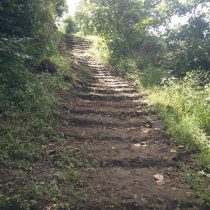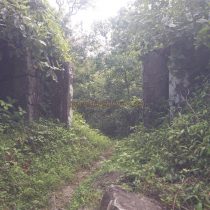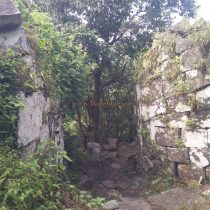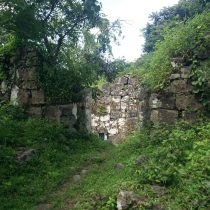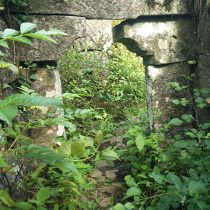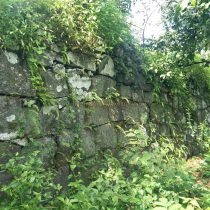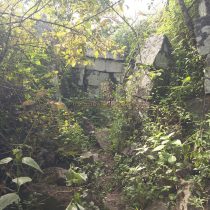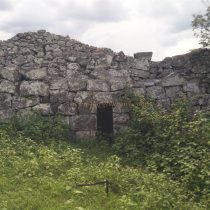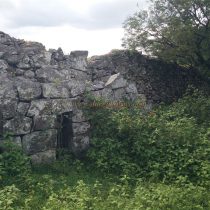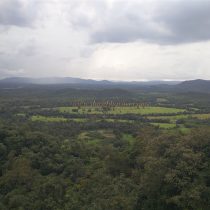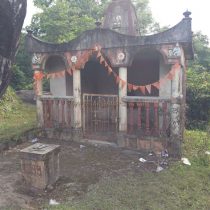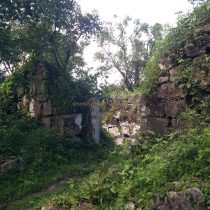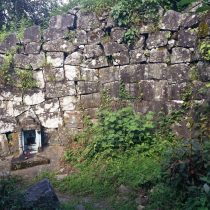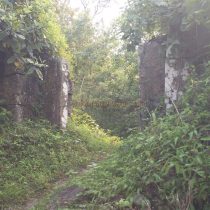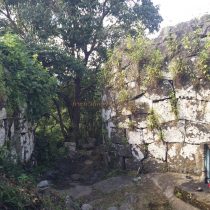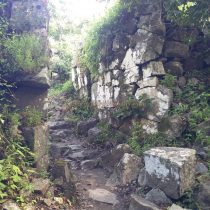MACHIGAD
TYPE : HILL FORT
DISTRICT : BELGAON
HEIGHT : 2650 FEET
GRADE : EASY
Halshi village is at a distance of about 14 km from Khanapur taluka in Belgaon district. The capital of King Ravivarman of the Kadamba dynasty is famous for its many ancient temples. But the fort on the hill to the west behind this village is so unfamiliar that barely any tourists visit this fort. Located at a distance of about 2 km behind Halshi village, this fort is known as Halshi fort but most of the people in the village do not know much about this fort. Machi village is situated at the foot of the fort and this fort is better known by the name of this village i.e. Machigad. In some places, the fort is also referred to as "Hanmant Gudgalu". This fort is located in Khanapur taluka of Belgaon district at a distance of 40 km from Belgaon and 15 km from Khanapur taluka via Nandgad.
...
Situated on a small hill in front of Nandgad fort, this fort and the ancient temples in Halshi village can be easily seen along with Nandgad in a day but it is necessary to have a private vehicle with you to do so. Also, there is no transport facility in this area. The distance from Nandgad to Machigad is only 4 km. The majority of the residents of Machigad village are Christians and there is a temple of Lord Subramaniam in the village. There is a paved path to reach the fort from the village and there are newly constructed steps on this path. In this way, we reach the north facing the gate of the fort in about 10 minutes. The antiquity of the fort can be seen by looking at the stone constructions. Built before the 11th century, this fort consists of large stones stacked on top of each other to build various structures, and no mixture of lime is used to join them. The main gate of the fort is built on the base of two bastions and the front part of the bastion is now heavily demolished. On the inside of the first door, is a statue of Maruti which was erected in the later period. The upper part of the inner gate of the fort has completely collapsed and only the frame remains. Upon entering the fort, there is a newly built temple of Goddess in front. From the bastion in front of the temple, Nandgad in front, Machigad village on the lower side, and Halshi village on the right can be seen. At the beginning of the fort round, there is a water cistern carved in the rock along the bank of the river. There is a small door in the rampart on the left as you descend from this cistern. Upon entering through this door, there is another east-facing gate of the fort in front. The arch of this square-shaped door still stands today with lotus flowers carved on it. Looking at the door, you can see some structures built beside it using the door’s wall as a common wall. To the right of the path is a pool of dried water. Leaving the highest part of the fort on the left, we reach the ramparts on the western side of the fort. This long fortified rampart on the slope of the fort is still standing today and in this rampart, you see vents for firing as well as a toilet. From here, you climb a tall rock and reach the next part of the fort where you can see the top of the fort full of trees. The head of the fort is east-west and is spread over about 3 acres. From here, after taking a detour around the ramparts and returning to the door, your fort round is complete. 45 minutes is enough to complete the fort round. At the beginning of AD, today's Kolhapur should be ruled by Shatkarni or Andhra Bhrutya. King Kadamba conquered the region from Andhra Bhrutya and made Halshi his capital city. The same inscription found at Halshi can be seen in the museum at Kittur fort. The fort is not much mentioned in later times. In 1756, the Marathas took over the province of the Nawab of Savanur, but they kept the villages of Kittur and Gokak under the control of the native Desai. Tipu conquered the province in 1785. After being defeated by the Marathas in 1792, this part came back to the Marathas according to the Treaty of Srirangapatna. For a few days around 1800, this part was under the control of the Dhondya Vagh of Kolhapur. Nandgad fort near Machigad was built by the Desai of Kittur in 1809. Twelfth Desai Shivalingarudra Sarja died childless in 1824. His mother Rani Chennamma adopted Shivalingappa and gave him the throne but the British rejected the adoption and confiscated Kittur. Due to this Rani Chennamma revolted against the British. This uprising is known as the Battle of Kittur. Considering the proximity of this fort to Nandgad, this fort also must have taken part in Kittur's struggle for independence.
© Suresh Nimbalkar

